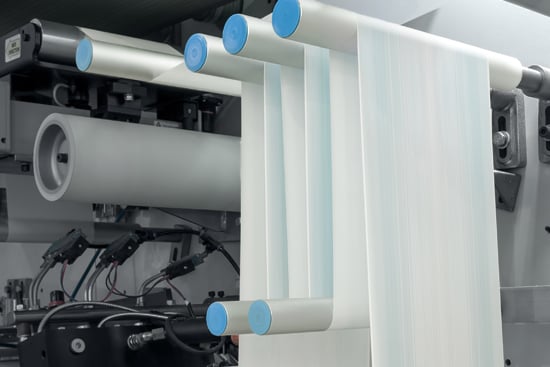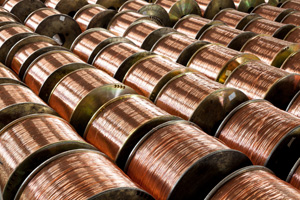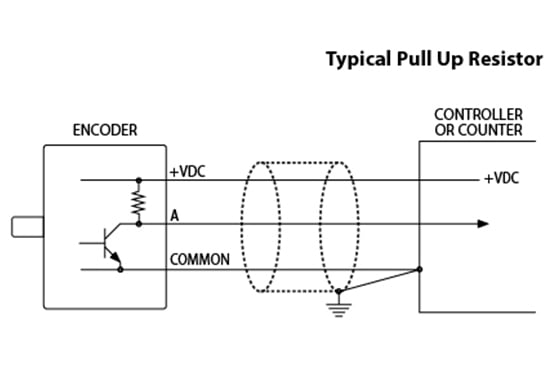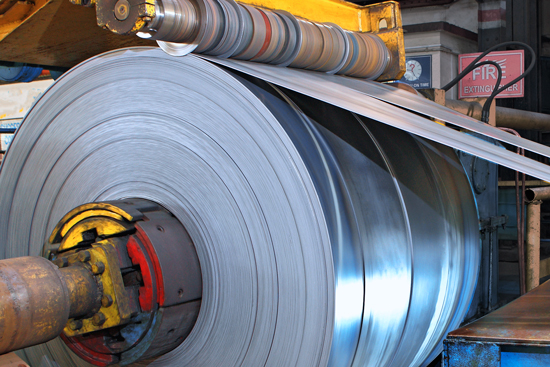Monitoring and adjusting the tension applied to material being wound onto a spool, reel, or drum is known as web tensioning. Encoders are often used in conjunction with other feedback devices and sensors to control web tension.
A typical web tensioning application involves one encoder mounted on a drive motor and a second encoder mounted to a tensioning roller arm or pinch roller. Both encoders supply speed data to the controller. If variations in the rotation speed of the motor and roller occur, the controller adjusts the drive motor in order to maintain a constant level of tension on the material.
Shaft, thru-bore or measuring wheel encoders can be used in these applications, depending on the system. The encoders may be applied to drive motors, the reel shaft, pinch rollers or tension rollers. EPC's Model TR1 Tru-Trac®, an integrated encoder measuring-wheel pivot-arm assembly, is used throughout various industries for spooling or level-wind applications.
Electrically, variables such as resolution, output type, channels, voltage, etc., should be specified to meet the individual application requirements. In the vast majority of installations, incremental encoders are most suitable. Quadrature output is useful in order to avoid edge jitter during stoppage. Special attention should be given to the potential for static discharge, grounding, and isolation of the encoder.
Environmental considerations are important when specifying your encoder. Take into account the encoder's exposure to liquids, fine particulates, extreme temperatures, and washdown requirements. An IP66 or IP67 seal protects against moisture ingress, while a stainless steel or polymer composite housing to mitigate the effects of harsh cleaning chemicals and solvents.
Examples of Motion Feedback in Web Tensioning
- Paper manufacturing
- Steel coil winding
- Flexible packaging film converting




